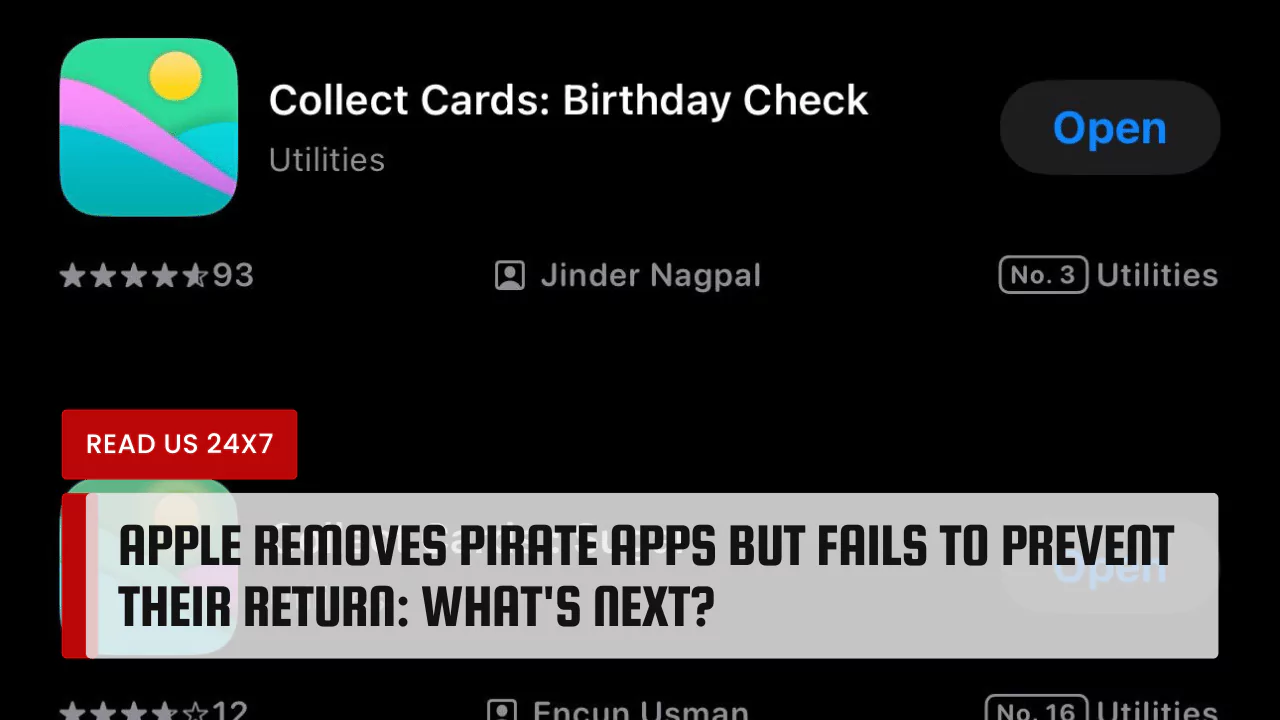Apple has removed pirate streaming apps from the App Store, but these apps continue to reappear. Developers find ways to bypass Apple’s review process. The return of these apps raises questions about what Apple will do next to address this ongoing issue.
Evolution of the Pirate Streaming App in the App Store
Removals and Reapprovals
In recent months, multiple pirate streaming apps have gained attention. Developers initially released these apps as simple platforms claiming to offer legal content. Upon detailed inspection, users discovered they were allowed access to a catalog of pirated movies and TV shows. Apple took action and removed some of these apps. Despite this effort, many have resurfaced, often under different names or modified versions. For instance, the app called “Collect Cards” gained notoriety for tricking users and reviewers alike.
Even after removal, the developers adjusted their tactics. They republished similar apps, exploiting flaws in Apple’s review system. This cycle of removal and reapproval shows a flaw in the current system. The ease with which these apps reenter the marketplace raises questions regarding the future effectiveness of Apple’s app approval processes.
Techniques Employed by Developers
Developers use several methods to avoid detection. One major technique is geofencing. This technology allows apps to detect a user’s location. When users are in the United States, the app displays a harmless interface. This prevents reviewers from spotting its true purpose. Users outside the US can access a different interface, revealing a library of pirated film and television content. This trickery makes it easier for these apps to slip past the scrutiny of Apple’s review teams.
In addition to geofencing, developers frequently update their apps. They change interfaces and descriptions to comply with App Store guidelines superficially. This constant adaptation to Apple’s rules makes it difficult for the company to keep track of these elements.
Key Features of the Pirate Streaming App
Access to Pirated Media
The main attraction of pirate streaming apps is access to a vast library of content. Users can find recent films, classic shows, and popular series that are otherwise locked behind subscription paywalls. For many users, the appeal lies in the chance to bypass expensive services like Netflix or Disney+. The illicit nature of this content may not deter users drawn to the promise of free entertainment.
Design and Navigation
Despite the illegal content, developers often create polished interfaces. When users first open the app, they see a clean design, making it look like a legitimate service. Navigation is usually straightforward. Users can search for titles or browse categories as they would in a standard streaming app. This design strategy lures in users who may have limited knowledge of the app’s true intent.
Cost of Subscription
Many pirate streaming apps operate on a model that seems attractive to users. They may offer free trials or low-cost subscriptions, making it easy for users to test the app without a significant commitment. This pricing strategy contrasts sharply with traditional streaming services, which often charge higher fees for access. While users may believe they are saving money, they risk legal consequences and security threats by using these platforms.
Legal and Ethical Concerns
Conflicts with App Store Guidelines
The presence of pirate streaming apps creates multiple legal issues. Such apps violate copyright laws since they provide unauthorized access to media. Users may unknowingly participate in illegal activities by downloading these apps. Despite Apple’s attempts to remove such apps, their repeated appearance raises doubts about the effectiveness of the company’s enforcement of its own guidelines.
Apple’s App Store has specific rules regarding the availability of content. When pirate streaming apps reappear, it signals a gap in enforcement. Continued violations could lead to more scrutiny from regulatory bodies and push Apple to make changes.
Effects on Creators and Copyright Owners
The existence of these apps impacts creators and copyright owners directly. When users turn to pirate streaming options, they harm those who produce content. Filmmakers, actors, and other industry professionals rely on legitimate views for payment. The revenue generated from subscriptions helps fund future projects. By bypassing these services, users undermine the system that supports content creation.
Moreover, the ongoing piracy issues damage the reputation of legitimate services. Users may become more likely to consider pirated options as alternatives. This shift can hurt the entire industry, leading to reduced investment in new content.
Conclusion
Apple’s challenge in removing pirate streaming apps highlights issues that require attention. The cycle of removal and reapprovals shows the need for a stronger review process. Developers continue to exploit weaknesses in Apple’s system, posing ongoing risks to users and creation. The long-term effects of these actions remain uncertain, but one thing is clear: the battle against piracy is far from over. Apple must find effective solutions to protect its platform and content creators from the harmful impacts of piracy.



